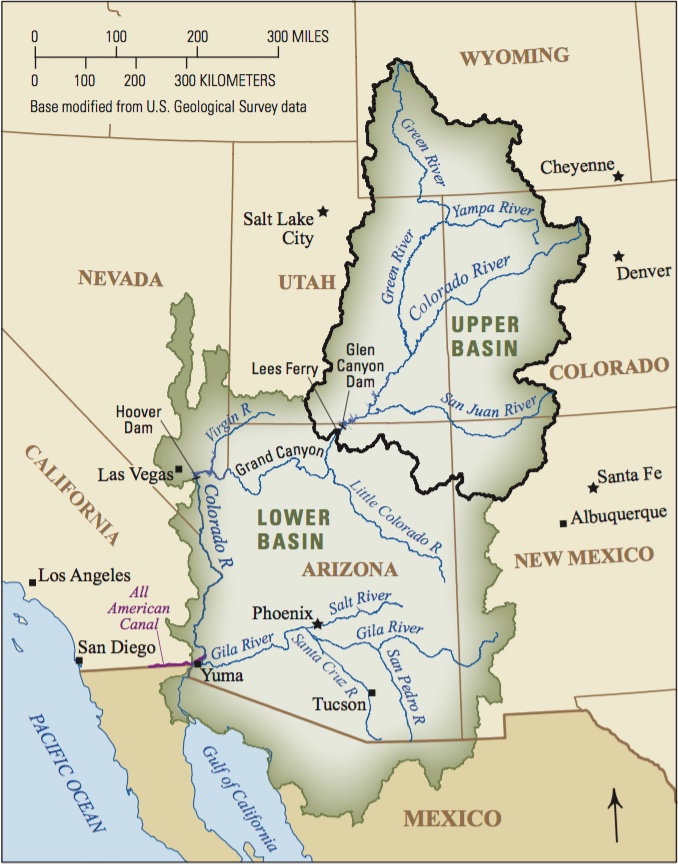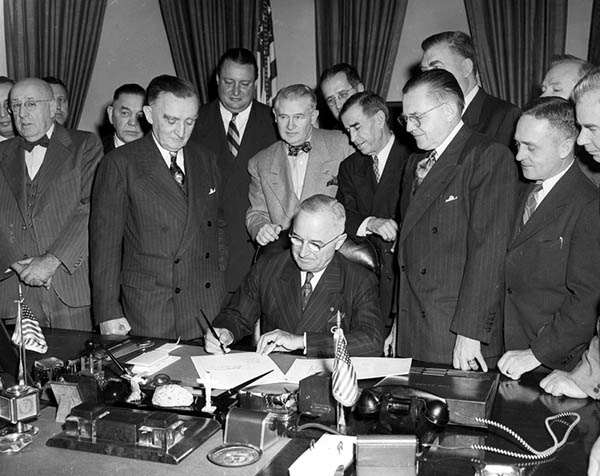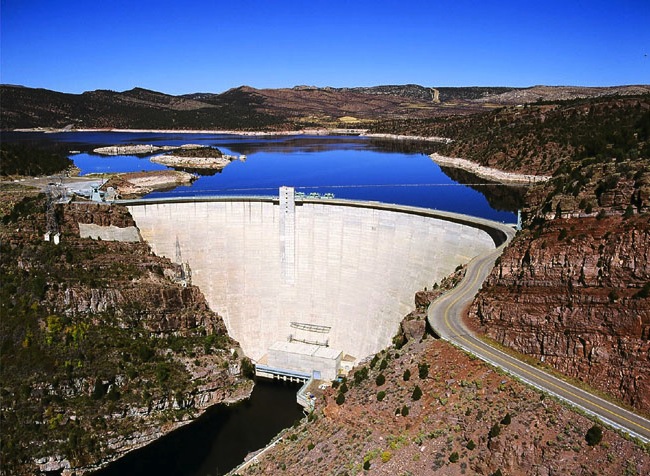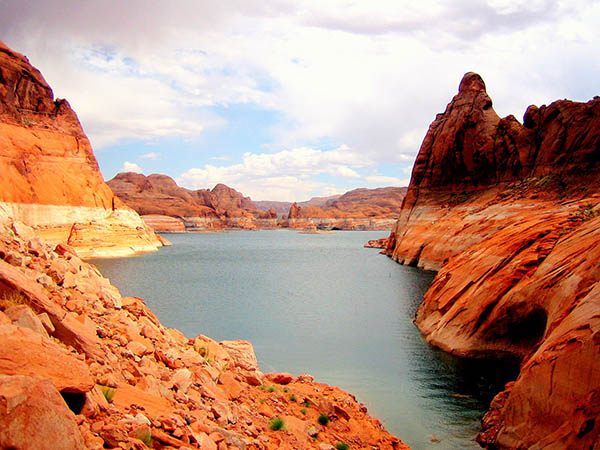Mission & Vision
What do a fountain in Los Angeles, a sprinkler in Denver, and a glass of water in Salt Lake City all have in common? Chances are some of this water comes from the Colorado River.
1/3 of Utahns rely on the Colorado River for drinking water. The need to create the Colorado River Authority of Utah (The Authority) comes at a critical time, given record low runoff on the Colorado River and historically low storage in the Colorado River reservoirs, including Lake Powell and Lake Mead.
The Authority was established in 2021 through landmark legislation sponsored by the House Speaker and Senate President in the Utah State Legislature. The Colorado River Authority of Utah is a state entity whose mission is to protect, conserve, use, and develop Utah’s Colorado River system interests.
The Authority collaborates and works closely with the six other Colorado River Division states. Wyoming, Colorado, New Mexico, and Utah make up the Upper Division States, while Arizona, California, and Nevada are known as the Lower Basin States.

Governance
The Colorado River Authority of Utah has a seven-member board representing water users across the state, Utah's Colorado River Tribes, and the governor.
Gene Shawcroft, Colorado River Commissioner of Utah, represents the state on all Colorado River issues, serves as a member of the Upper Colorado River Commission, Utah's Basin States Representative, and leads the Authority board as its Chair.
Timeline
The Colorado River Authority of Utah focused its initial year on renegotiating the 2007 Interim Guidelines and building a critical foundation for the organization. Rules governing advisory council structure, council members, council leadership, and authorized topic areas of interest were constituted by the end of 2021, as outlined in the statute.
During this time, the Authority hired two staff engineers, prepared an annual report, and worked during the 2022 General Session to pass SB 160 Amendments to the Colorado River Authority Act.
At the interstate level, the Authority has worked on the Drought Response Operations Agreements, the 2022 Plan, the Lake Powell Cooperative Plan, and helped with the Upper Basin 5-Point Plan, which consisted of:
- Development of a 2023 DROA Plan;
- System Conservation Pilot Program;
- Consideration of a Demand Management Program;
- Implementation of Bipartisan Infrastructure Law(BIL) funding; and
- Aggressive Water Management
The Authority has also worked on a post-2026 operations criteria and NEPA process to change the Colorado River Operations.
History
1922: Colorado River Compact of 1922
This 100-year-old compact set the foundation for the interstate water cooperation that continues today. It gave both the Upper and Lower Basins the exclusive beneficial use of 7.5 million acre-feet of river water annually .

1948: Upper Colorado River Basin Compact of 1948
This federal compact allowed the Upper Basin to start developing its share of the Colorado River based on the supply available for each year in the Upper Basin, according to the following percentages: Colorado (51.75%), Utah (23%), Wyoming (14%), and New Mexico (11.25%).

1956 & 1968: Colorado River Storage Project Act of 1956 and Colorado River Basin Project Act of 1968
These two federal laws (in 1956 & 1968) authorized the construction of additional dams on the Colorado River, including the Glen Canyon Dam in Arizona and the Flaming Gorge Dam in Utah.
It also allowed the Central Utah Project (CUP) to place a large share of Utah’s eventual water into beneficial use.
View the Colorado River Storage Project Act of 1956 and the Colorado River Basin Project Act of 1968

2007: Colorado River Interim Guidelines
In response to the driest eight-year period on record in the Colorado River Basin, interim guidelines were established to provide the coordinated operations of Lake Powell and Lake Mead and reductions in use of the Lower Basin and low reservoir conditions.

2019: Drought Contingency Plan
The continued drought led the Colorado River Basin States to create the Drought Contingency Plan (DCP) in 2019.
The DCP supplements the 2007 interim guidelines and outlines additional actions to reduce the likelihood of reaching critical elevation levels in Lake Powell and Lake Mead throughout 2026.

